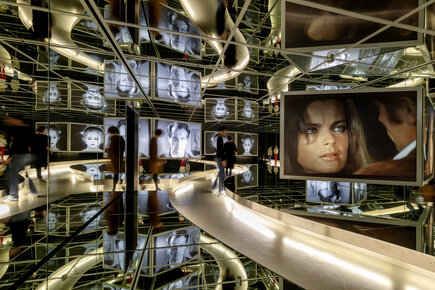
Charlottenburger Chaussee 109
13597 Berlin
030 3325772
marian@ich.ms

The Märkisches Museum is closed
The collection of the Märkisches Museum shows 800 years of city history at your fingertips.
Please note: The listed building is being renovated and will remain closed for several years.
The rooms of the Märkisches Museum presents the diverse history of the German capital. Travel back in time and discover the Köpenicker Altar from the 16th century, or a real armoury. At the same time, you can experience the daily life of old Berlin: stroll through historical streets in the themed rooms. Or pay a visit to a barber from the turn of the previous century – the famous court barber Haby. Breathe in the air of history and feel the unique ambience of each Berlin district through film, photos, painting and sculpture. Especially the everyday objects that bring you closer to the lives of past Berliners. Together with four other houses such as the Nikolaikirche, the Ephraim Palais, the Knoblauchhaus and the Düppel Museum Village, the building forms the Stiftung Stadtmuseum Berlin.
The end of the 19th century calls for a city museum in Berlin, and in 1874 the Märkisches Provinzialmuseum is founded by a group of citizens. The collection outgrows the Baroque Palais Podewils, and the current structure is constructed between 1899 to 1908 under the supervision of Ludwig Hoffmann, the director of urban planning and construction. The museum is hugely popular for many years. The Berlin Wall also divides the museums, and in 1962 the Berlin Museum is built in the western part of the divided city. After reunification, the city renovates the historic museum in Köllnischer Park, and since then, visitors have been able to touch Berlin's history in the Stadtmuseum.
The museum is home to over 45 million artefacts. The permanent exhibition "Here is Berlin!", is an exciting experience where visitors can take a walk through the Imperial Unter den Linden to Brandenburg Gate. Themed rooms also let you discover hidden treasures, and let you learn about Berlin’s Jewish life,. You will also encounter the horse head from Schadow’s group of sculptures, which is the only remaining part of the original chariot on the Brandenburg Gate. Furthermore, young visitors will find that the museum's comprehensive programme at the laboratory encourages them to get involved with a hands-on experience of history. The Märkisches Museum and the Marinehaus will form a unity in the future and will be the centerpiece of a new museum and creative quarter at Köllnischer Park. The Marinehaus serves then as a center of activities and a municipal laboratory.

To fully utilise your day of sightseeing, there are some other attractions in the vicinity that you can visit after your trip to the museum. Start with Köllnischer Park right behind the museum, where you can relax. This listed landmark has a complex of buildings and an open-air museum with sculptures and fragments of historic buildings. There is also a bear moat where bears used to live up until a few years ago. The Nikolaiviertel is a reconstructed historical area of inner Berlin. It takes its name from the Nikolaikirche – today, a museum for the church, building and city history. Here, you can experience regular organ concerts. Cross the Schlossbrücke to get to the UNESCO protected Museumsinsel. Stroll past the majestic buildings and let yourself be enchanted by this historic place. Unwind on a bench or the grass in the Lustgarten, and revel in the presence of the sculptural witnesses of the past.
Arrival with public transport to the Märkisches Museum is convenient. Take the underground line U5 and U2 directly to the Märkisches Museum stop.
The Märkisches Museum is being renovated and will remain closed for the next few years.